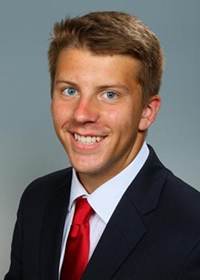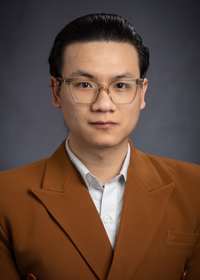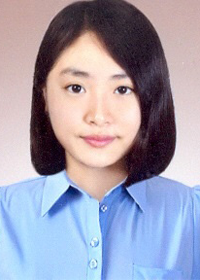Moderator: Marc Horner, ANSYS
Presentations in this session were chosen from the peer-reviewed contributed papers. The papers will be published in the 2023 Proceedings of the Design of Medical Devices Conference in the ASME Digital Collection.
Presentations are added as they are confirmed.
Experimental Validation of a Computational Knee Model of TKR Implant Placement

Aaron Henry
Texas A&M University
Abstract: The goal of this work was to experimentally validate a computational model for TKRs to improve implant alignment accuracy and assess potential implant misalignment during preoperative planning. Initial validation of the model was achieved by comparing ligament strain energies between the computational model and a physical knee model comprised of bone and ligament analogues. Experimental validation would be considered met when the computational model strain energies were within 10% of the measured values for all six physical knees. Physical and computational knee models were created with six variations of implant alignment to test the robustness of the computational model. Strain energy errors were well within the 10% threshold across knee range of motion.
Bio: Aaron Henry is currently a PhD student in the Department of Multidisciplinary Engineering at Texas A&M University. He received his Bachelors of Engineering in Mechanical Engineering from Stevens Institute of Technology in Hoboken, NJ. His research interests include motion biomechanics and biomechanical modeling for both human and animal applications.
Co-Authors: Gordon Goodchild, Jon Greenwald, Morteza Meftah, Michael Moreno and Andrew Robbins
Surrogate Models of Blood Flow Dynamics in Brain Aneurysms using Dynamic Mode Decomposition

Tam Thien Nguyen
North Dakota State University
Abstract: The evolution of blood flow is vital in understanding the pathogenesis of brain aneurysms. Several past studies have shown evidence for a turbulent inflow jet at the aneurysm neck. Even though there is a great need for analyzing inflow jet dynamics in clinical practice, data summarized in non-invasive modalities such as Magnetic Resonance Imaging or Computed Tomography are usually limited in spatial and temporal resolutions, and thus cannot account for the hemodynamics. In this work, Dynamic Mode Decomposition (DMD) is used to pinpoint the dominant modes of the inflow jet in patient-specific models of internal sidewall aneurysms utilizing high-resolution data from Computational Fluid Dynamics. The purpose of this thesis is to prove that the dynamic modes are not only governed by the hemodynamics of the parent artery but by the inflow jet interaction with the distal wall. Our work indicates that DMD is an essential tool for analyzing blood flow patterns of brain aneurysms and is a promising tool to be used in in-vivo context.
Bio: Tam Thien Nguyen is currently pursuing his Doctor of Philosophy in Civil Engineering at North Dakota State University under the supervision of Dr. Trung Bao Le. Before landing in the land of opportunity and working at Dr. Trung Le’s Computation Fluid Lab, he graduated from the Vietnam National University (VNU) of Science with a Bachelor of Science in Physics, International Program. During this time, he studied Molecular Dynamics (MD) methods for the binding of complex ligand-protein systems; and participated in the FZJ-VNU KeyLab Initiative Program, spending his times at both VNU, Vietnam and Forschungszentrum Jülich, Germany. Mr. Tam Nguyen got his B.Sc. in 2019 and spent the next two years working for the Viettel Aerospace Institute. At the new place, he first approached multiple problems in the Computational Fluid Dynamics (CFD) domain, which he found exciting and asked himself how to marriage this new technique to his previous MD knowledge. He found an opportunity to answer that question reading the works of Dr. Trung B. Le. In late 2021, Mr. Tam Nguyen quit his job and applied for a PhD position at NDSU. Now working in exactly the method he has a glimpse of earlier, he and his colleagues are developing models and doing simulations of complex biological fluid flow in various applications (heart valve, aneurysm, metastasis, etc.). His initial works have been presented in the 2022 APS DFD and 2022 USND/TAM conferences.
Co-Authors: Davina Kasperski, Trung Le, Tam Nguyen, Phat Huynh and Trung Le
Xtracellular Flow Patterns Surrounding a Breast Cancer Cell During Transport in a Microchannel

Lahcen Akerkouch
North Dakota State University
Abstract: We performed the transport of a breast cancer cell (MB231-TGFb) in a microvessel using high-resolution simulations. Using open-source imaging software Slicer3D and Meshmixer, the 3D surface mesh forming the cell membrane was reconstructed from confocal microscopic images. The Dissipative Particle Dynamics method is used to model the cell membrane. The extracellular fluid flow is modeled with the Immersed Boundary Method to solve the governing equations of the blood plasma. The unsteady flow is applied at the inlet of the microchannel with an oscillatory pattern. Our results showed that the extracellular flow patterns are highly dependent on the waveform profile. The oscillatory flow showed the creation of vortices that influence the cellular deformations in the microchannel. These results could have implications for the destination of the cancer cells during transport in physiological flows.
Bio: My name is Lahcen Akerkouch, and I hail from Morocco. I completed my Bachelor's degree in Physics in 2015 at the University of Mohamed V in my home country. Subsequently, I pursued graduate studies in Energy Engineering and received a Master's degree, focusing on numerical modeling of heat transfer. During this time, my interest in simulation and modeling grew substantially, which motivated me to embark on a Ph.D. program in the Civil Engineering Department at North Dakota State University. Currently, I am conducting research in Dr. Trung Le's fluid laboratory, focusing on simulating the dynamics of blood flow and cancer metastasis. The primary objective of my research is to develop a new novel framework that overcomes the current limitations of state-of-the-art models in order to better understand the cellular dynamics of red blood cells and cancer cells. Apart from my research, I am also actively involved in my TA duties.
Co-Authors: Lahcen Akerkouch, Trung Le, Aaron Vanyo and Amanda Haage
Design of a Hybrid-Inertial Device for the Separation of Circulating Tumor Cells

Mohammed Raihan Uddin
Washington State University
Abstract: Circulating tumor cells (CTCs) are shed from primary tumors, circulate in the bloodstream and are capable of initiating metastasis at distant anatomical sites. The detection and molecular characterization of CTCs are pivotal for early-stage cancer diagnosis and prognosis. Recently, microfluidic technology has achieved significant progress in the separation of cells from complex and heterogeneous mixtures for many biomedical applications. Conventional microfluidic platforms exploit the difference in size between the particles to achieve separation, which makes them ineffective for sorting overlapping-sized CTCs. To address this issue, we propose a method using a spiral channel for label-free, and high throughput separation of CTCs coupling Dielectrophoresis (DEP) with inertial microfluidics. A numerical model has been developed to investigate the separation effectiveness of the device over a range of electrical voltage and flow rates. The presented channel is shown to effectively isolate similar-sized CTCs from the white blood cells (WBCs) in a single-stage separation process. Subsequently, optimum working parameters to enhance separation efficiency have been proposed. The hybrid microfluidic device can provide valuable insight into the development of a robust, inexpensive, and efficient platform for cell separation with reduced analysis time for future cancer research and treatment.
Bio: Mohammed Raihan Uddin is currently pursuing his Master of Science in Mechanical Engineering at Washington State University. Additionally, he has been actively contributing as a Graduate Assistant at the Computer-Aided Engineering Lab at Washington State University since August 2021. Before embarking on his academic journey in the United States, Raihan obtained his Bachelor of Science in Mechanical Engineering from the Islamic University of Technology in Bangladesh, graduating in 2018. Subsequently, he served as a lecturer in the Department of Mechanical and Production Engineering at his alma mater from 2019 to 2021. Raihan's research interests lie in the field of microfluidics, Microelectromechanical Systems (MEMS), computational fluid dynamics, and machine learning. With a solid foundation in his field and a passion for innovation, he aims to make a significant impact in the advancement of biomedical devices.
Co-Authors: Mohammed Raihan Uddin and Xiaolin Chen
Design of Baby Cushion for Stroller using Finite Element Simulation

Hyeyeong Song
Korea University
Abstract: Infants spend most of the day sleeping anywhere. In the past, most parents put their infants to sleep in the prone position, but recently they put their infants to sleep in the prone position because of an issue of sudden infant death syndrome. When infants sleep in a supine position for a long time, occipital bone deformation is occurred because of pressure at the occipital region. To prevent minimize the pressure on the infant's head and body, through the finite element simulation using the infant model, a baby cushion for the stroller was designed using the central composite design (CCD) method. The maximum contact pressure between the designed cushion and the infant model was 22.8 mmHg and this value is about 50 % lower than the pressure that occurred between the infant model and the general cushion. It can be helpful to reduce the possibility of a baby’s head deformation and other body disorders.
Bio: She majored in control and instrumentation engineering at Korea University and is currently taking the integrated master's and doctorate course at the graduate school. The current research field is computational simulation and control algorithm design using human body models. Representative performance study was fall-inducing simulation and data processing and analysis using a human body model for the design of fall prevention algorithms.
Co-Authors: Soonmoon Jung, Hyeyeong Song, Yeeun Kang, Jaemin Kim, Youngho Lee and Junghwa Hong